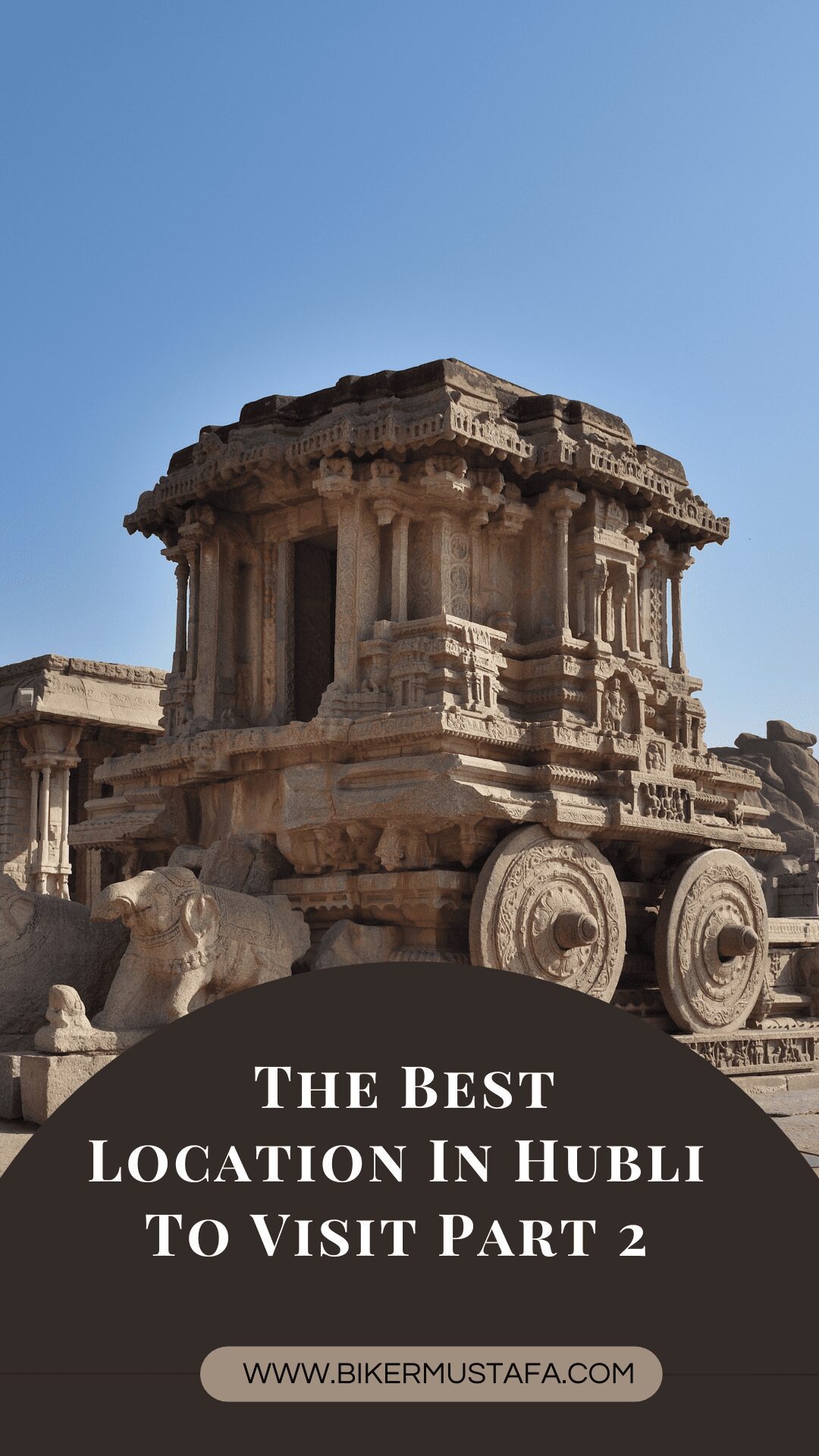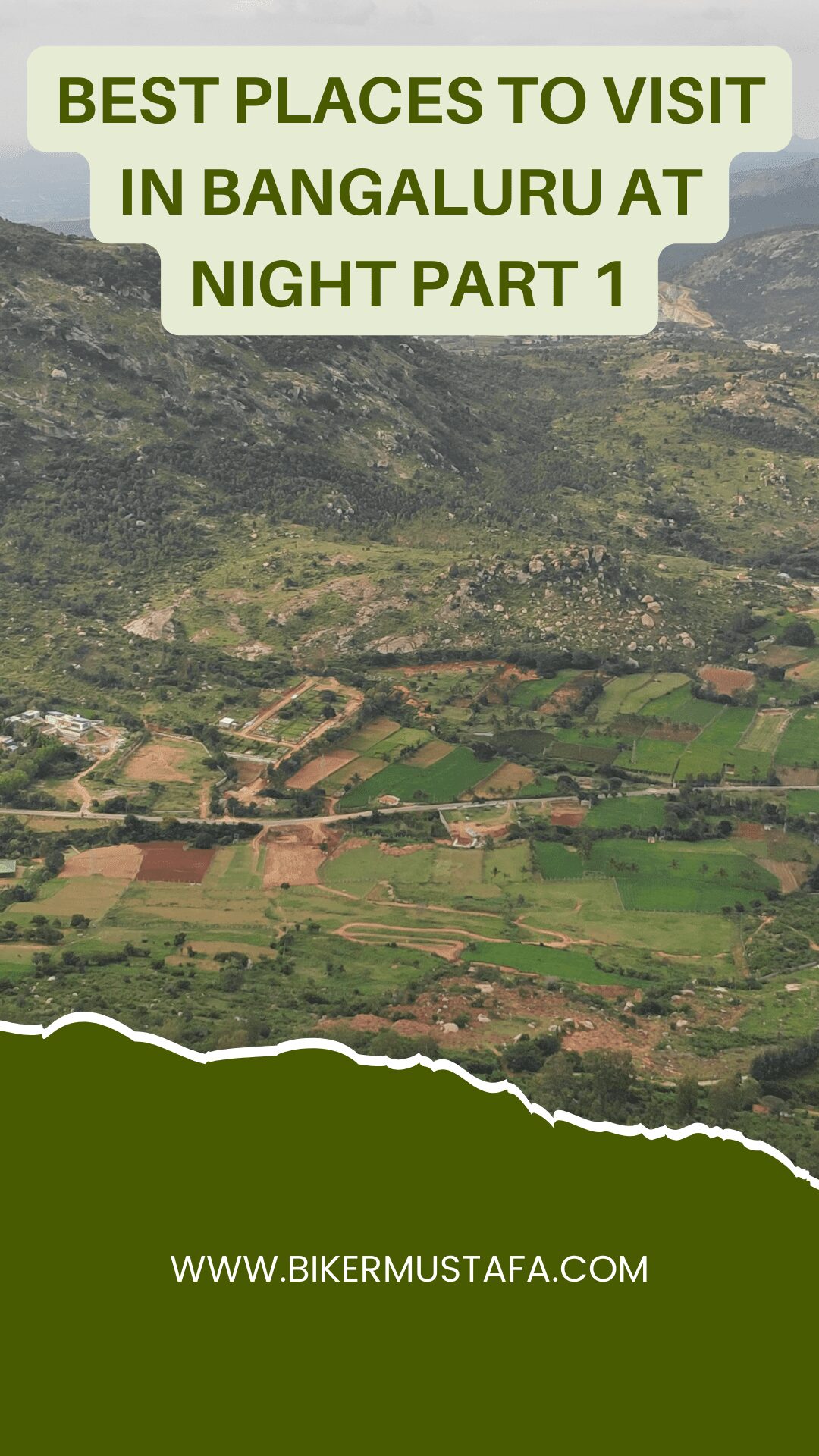The Best Location In Hubli To Visit Part 2
The Best Location In Hubli To Visit Part 2
Banashankari Temple
In the Bagalkot district of Karnataka, India, Cholachagudda is home to the Hindu shrine Banashankari Devi Temple (also known as Banashankari Temple). Since the temple is situated in the Tilakaaranya forest, it is also known as Shakambhari, Banashankari, or Vanashankari. The Shakambhari (Kannada: o), a manifestation of the goddess Parvati, is another name for the temple deity.
Both Karnataka and the neighboring state of Maharashtra send pilgrims to the temple. The original temple was constructed by the Badami Chalukya kings of the 7th century, who revered the goddess Banashankari as their patron deity. The temple holds its yearly celebration in January or February, known as Banashankari jatre. The event includes cultural performances, a boat festival, and a Rath yatra, during which a chariot pulls the temple goddess around the city. Maa Shakambhari Devi has a form known as Banshakhari. This authentic, primary, and historic temple is situated in Uttar Pradesh’s Saharanpur District. The name Shaktipeeth Shakambhari Devi is another name for it. Along with the mother, there are statues of Bhima, Bhramari, Shatakshi, and Ganesha.
History
According to epigraphic inscriptions, the goddess’ image was erected in the original temple by Jagadekamalla I in 603 AD, during the Kalyani Chalukya dynasty in the seventh century AD. The current temple was constructed in 1750 by the Maratha leader Parusharam Agile.
It is also said that the original temple predated the Chalukyan dynasty, which granted royal favor to the Vaishnava, Shaivite, Jain, and Shakta religious traditions. As a manifestation of Shakti, their Supreme Goddess, they revered Banashankari. According to epigraphic inscriptions, the temple was rebuilt and added to by Jagadekamalla I. Another 1019 AD inscription in the Kannada language on a pillar on the temple’s northern side praises the courage of Rashtrakuta monarch Bhimadeva. The Deepa Stambas (light pillars) at the temple’s entrance, whose construction is credited to the warrior Ketimayya, according to an inscription.
Structure
The temple was initially constructed using a Dravidian architectural design. The newly built building is designed in the Vijayanagara manner. A tall wall surrounds the temple. A Mukha mantapa (portico), an ardha mantapa (entry porch/chamber in front of the sanctum), and a shrine with a Vimana above it make up the main construction (tower). The revered figure of the goddess Banashankari is located in the temple’s central sanctuary. The goddess is seen riding a lioness and trampling a demon under her foot in the black stone sculpture. The goddess has eight arms, and in addition to a Trishul (trident), damaru (hand drum), kapaalpatra (skull cup), ghanta (war bell), Vedic texts, khadga-kheta (sword and shield), and severed demon head, she also carries ghanta (war bell). The goddess was the Chalukyan tutelary deity known as Kuladevi. Devanga Community’s tutelary god is the goddess Banashankari. This goddess is particularly revered among the Devanga weaver community. Many Deshastha Brahmins also worship Banashankari as their protective deity.

A 360-foot (109.7-meter) square water tank, colloquially known as Haridra Tirtha, an incorrect spelling of Harishchandra Tirtha, is located in front of the temple at the entrance. Stone mandapas (halls) enclose the pond on three sides. A pradakshina circumambulates the tank.
Lamp towers (Deepa stambhas) may be observed at the entrance and in the front of the temple on the west bank of the pond. A unique guard tower that “reflects the Vijayanagara combination of Hindu and Islamic style” is the tower on the bank of the tank. It goes by the name Victory Tower.
Legend
According to the ancient texts Skanda Purana and Padma Purana, the demon Durgamasura regularly persecuted the surrounding populace. The Lord instructed the goddess Shakambari to aid the people in response to the Devas’ (demi-gods’) requests for protection from Durgamasura through a sacrifice to God. The goddess manifested herself as the Shakambari goddess through the flames of the Yagna (fire sacrifice). After a bloody struggle, she slew the demon and brought calm to the area. Goddess Parvati, the consort of the God Shiva, is thought to have taken on the form of Banashankari.
Coconut, plantain, and betel leaf trees and plants can be found in the jungles surrounding the temple. As a result, it is also claimed that amid a severe famine, the goddess gave the people food and vegetables to live, earning her the moniker Shakambari.
Jatre Banashankari
During the Rath yatra, the Banashankari jatre (‘jatre’ meaning a “fair”) is held on the temple grounds as a religious and cultural festival. It lasts for about three weeks after the Rath yatra. On the eighth day of Pushya Masa, it begins. They are celebrated on the day of the full moon. Although there is no historical evidence to support the start of this festival, it is assumed that it began around 200 years ago. Numerous pilgrims of various religious beliefs from all over Karnataka and the adjacent state of Maharashtra gather here to celebrate the festival. Even marriages can be fixed at this time, and you can buy farming equipment. The majority-rural of the community visits the location to worship their chosen deity and for fun and frolic. Cultural programs (music, theatre, and circus) are held to entertain them. It represents the shared cultural heritage of the residents’ many communities. One distinctive aspect of the event is that Muslims frequently run the stores and kiosks set up during it and exhibit a depiction of the goddess Banashankari in addition to selling vermilion, clothes, sacred threads, and sweets. The sale of artistically engraved door frames and doors made of teak, acacia, and other types of wood by artists from Holeyalur and the neighboring districts is another intriguing marketing activity that can be seen at this location. During this occasion, a cattle fair is also organized. The cattle fair’s focus on selling white bulls makes it unique.

Hundreds of different types of leaves and flowers are used to beautify the town and temple during the festival. A Palleda Habba, also known as the Vegetable Utsava or celebration, is celebrated as part of the fair, which kicks off on Bandhashtami day. At the festival’s beginning, 108 different vegetable-based food items (referred to as “Bazi” in the local language) are offered to the deity.
The Teppotsava (the boat festival), which takes place in the temple tank, is another unprecedented event commemorated by the festival. During this celebration, parents take newly born children blessed by the goddess’ grace around the pond on boats made of banana stems to bring luck to their offspring.
Rath Yatra
Every year, on the full moon day of the Hindu month Pausha (January), the goddess Parvati is carried on a chariot (a portable shrine) through the streets of the Cholachagudd hamlet to another neighboring sculpture called Padhkatte. This festival is known as Rath Yatra. Thousands of people from around the state attend the Rath yatra, regardless of caste or religion. People from neighboring villages travel brightly adorned carts to view this cultural and religious extravaganza.
Images of the gods and goddesses revered in Hindu temples are carried on enormous wooden chariots called raths and driven in a pageant by the faithful during religious events. The chariots typically stand 5 to 6 meters (16.4 to 19.7 feet) tall and weigh several tonnes. The chariot is mounted with enormous solid wood wheels. Specially trained men pull the chariot. The chariot always has figurines of gods and goddesses engraved on it, giving the impression that it is a miniature temple or shrine.
Place and accessibility
Between the two gorges are the Banashankari temple, south of Badami, and the village of Badami. Sandstone hills rise steeply in the valley created by the two gorges. Black cotton soil is the name given to soil formation.
On the route to Gadag, the temple is situated in Cholachagudd, about 5 kilometers (3.1 miles) from Badami. The closest railhead is Badami Railway Station, which is serviced by South Western Railways. Badami is 495 kilometers (307.6 miles) from Bangalore and 125 kilometers (77.7 miles) from Hubli, the closest airport, and is well connected to Karnataka by a strong network of roads. All kinds of ornaments, jewelry, wall decor, clothing, bangles, and delicacies are offered at the fair. It is a 12-day fair.
| Location | Banashankari Badavane, Vidya Nagar, Hubli, Karnataka 580031 |
| Time | Anytime |
Gayatri Tapovan
The spiritual center and temple Gayatri Tapovan is situated in Ramankop hamlet, 24 kilometers from Hubli, in the Karnataka state. It is one of Hubli’s most well-known pilgrimage sites and one of the highlights of any city tour.
Gayatri Tapovan, well-known for its spiritual and cultural events, was founded in 1965 by Sri Kumar Swamiji, a renowned preacher whose followers come from all communities and locations. Gayatri Tapovan was formerly known as the “Navakalyana” Matha. Following Kumara Swamiji’s passing, his followers kept up the tradition.
The “Gayatri Tapobhoomi,” a Divine temple, is located on the property. The “Gayatri Goddess” that resides there is even more magnificent than the temple itself. According to legend, the goddess Gayatri bestows blessings on those who have a firm resolve on their Sankalpa. The Gayatri Tapobhoomi is created by those who have strong souls and have performed several good deeds throughout their lives.
All visitors to Tapobhoomi receive a free meal as Prasadam (Tiffin, lunch, tea, and dinner) from the Tapovan Matha. 250 to 300 devotees are served here daily, and 700 to 800 on Sundays and major festivals. Additionally, it offers financial assistance to those who cannot afford it.
| Location | 949W+783, Gayatri colony, Bengeri Extension, Hubballi, Karnataka 580023 |
| Time | 6 AM – 12.30 PM, & 4.30 PM – 8.30 PM |
Sayed Fateh Shah Dargha
Sayyed Fateh Shah Wali is well-known among the Hubballi Muslim saints. According to legend, Tipu Sultan traveled to Hubballi in 1780 as part of his campaign against the Savanur Nawab. He went to the dargah in Old Hubli to pay his respects after learning that it was connected to numerous miracles. He gave the dargah the name Sayyed Fateh Shah Wali to honor his triumph and demonstrate his respect. A large gate greets all guests at the grave. It used to have a sizable natural tank a few decades ago. It was also known as Lal Talab due to its dirty water (red tank). Sadly, this tank is no longer available.
Another intriguing tale involves the Indian Railways, a bald Muslim saint, and other characters. The Railway Workshop was founded by the British in 1880. Before then, local laborers and British engineers set the railway lines. They encountered a saint’s grave nearby while trying ineffectively to lay the railroad. They granted land for the construction of a tomb in addition to leaving the grave unaltered as a sign of respect for him. This stunning dargah, which is close to Hubballi Railway Station, bears the name of the bald saint Bodke Shah Wali.
Mohammed Adil Shah built the aasar in 1646, where two of the Prophet Muhammad’s hair strands were preserved in a jar. They are on display to the public during the Eid-e-Milad (Prophet Muhammad’s birthday), and a fair is hosted for two days for both men and women.

The shrines of Hazrat Noor Mohammed Shah Qadri, Hazrat Ghaib Shah, Hazrat Muhiuddin Deevan, Hazrat Sayyed Sadat, and others are among the essential Sufi dargah in Hubballi. In ancient times, there was a dargah on every street, and people from all religions attended the saints’ death anniversaries (urs). These dargahs still work to foster communal cohesion today despite shifting political conditions.
Hubli is renowned for having Dargahs, and there is unquestionably a reason for this. One of the well-known Sufi saints, Sayed Fateh Wali Shah, has a memorial that is among Hubli’s most popular tourist attractions. Thousands of pilgrims travel to the magnificent Sayed Fateh Shah Wali Dargah each year to worship and pay their respects.
| Location | NH67, Heggeri Colony, Old Hubli, Hubli, Karnataka 580030 |
| Time | Anytime |
ISKCON Krishna Balarama Temple
On the auspicious day of Sri Rama Navami in April 2002, the utsava Deities of Sri Krishna Balarama and Sri Gaura Nitai were set up in this location. The Deities were etched in Vrindavana’s holy Dham. The temporary Temple is now situated on 8.19 acres of land in Rayapura.
Along with daily worship and spiritual teachings, the Temple offers special Sunday events like Yoga for Happiness in the evening. On Sundays, prasadam, or free food, is provided to devotees.
The Krishnamrita restaurants run by the Hare Krishna Movement offer home deliveries of freshly baked pastries, bread, biscuits, savories, hot snacks, juices, and coffee.
Other activities: The devotees also frequently engage in the following events in addition to the numerous annual festivals observed in the Temple.
Heritage Fest: A competition of activities centered on Indian heritage for students in grades LKG through 10th to offer them a chance to show off their talents and ingenuity in these contests. It was the largest children’s cultural festival held in Hubballi and Dharwad. In 2014, more than 13,500 kids from different schools took part. It included various vibrant activities, including dance, theatre, vocal music, rangoli, painting competitions, Vedic quizzes, etc.
A 15-day program called “Culture Camp” teaches schoolchildren various arts and abilities like drawing, painting, reciting poems from the Bhagavad-gita, molding clay, etc. Additionally, this camp instills in them a variety of moral principles.
Sri Krishna Contest: A written test competition for students in grades 5 through 10. Coloring competition for schoolchildren in grades LKG through 4 called Goloka Shades. Construction is currently underway on a spectacular temple and cultural complex that will house the gods Sri Radha Krishna, Sri Krishna Balarama, Sri Gaura Nitai, and Sri Srinivasa Govinda.

The same Bhoomi Puja was conducted in 2011. This cultural complex will present India’s illustrious tradition of priceless art, architecture, and heritage. The facility will be a distinctive fusion of contemporary design and conventional Hoysala architecture.
The Temple shall include:
- Pillars with intricate carvings
- Figures with intricate sculptures illustrating many Puranas themes
- Decorative arches
- Typical gold kalashas adorn the Temple’s roof.
- A room for meditation and prayer
- A temple pond for boat celebrations (Kalyani)
- Essential elements of the cultural complex
- A magnificent setting with vibrant gardens, lush lawns, and a musical fountain will surround the complex.
- A cutting-edge multimedia theatre with 300 seats where Vedic culture’s values are presented through light and sound displays, movies, and video and audio-animatronics
- Through heritage and cultural festivals, a heritage auditorium and outdoor theatre will cultivate skills.
- A cultural and spiritual theme park that uses entertainment to highlight the illustrious past.
- An Annadana Mantapa where devotees can receive Krishna prasadam.
- A Harinam Mantapa encourages millions of people to recite the Hare Krishna mantra at least 108 times to promote peace and harmony worldwide.
- A Value Education Block uses personality development classes, lectures, seminars, workshops, dramas, and other activities to inculcate moral, cultural, and universal values.
The ISKCON Krishna Balarama Temple, a tranquil Hindu temple devoted to Lord Krishna, is one of Hubli’s most revered tourist attractions. The Temple, which is in Rayapur, is remarkably similar to the design of the ISKCON temple in Bengaluru. 80,000 schoolchildren from the twin cities of Hubli and Dharwad receive lunch from the Temple.
| Location | KSFC, Hubballi-Dharwad Road, Besides, Rayapur, Karnataka 580009 |
| Time | Morning – 7:15 am – 1:00 pm Evening – 4:15 pm – 8:30 pm |
Kittur Rani Chennamma Circle
In the center of Hubli, close to the ancient bus stop, is the famous Kittur Rani Chennamma circle, also known as Traffic Island. This intersection of eight routes. In honor of her courage, a statue of Rani Chennamma, sometimes referred to as Kittur Rani Chennamma, was built here. The first Indian woman to campaign for independence, Rani Chennamma stood against the British Empire by herself and with courage. A lovely lawn surrounds the circle.
| Location | Deshpande Nagar, Hubli, Karnataka 580029 |
| Time | Anytime |
Church of St. Joseph
You should visit St. Joseph Church in Keshwapur if you want to visit Hubli’s most stunning church. It is conveniently situated in Hubli and is only a short drive away. The church is distinctive from other churches since its exterior structure is circular. The interiors are flower-decorated, and the atmosphere is vibrant. It is a Hubli must-see location that no traveler should skip.
| Location | Keshwapur, Hubli, Karnataka 580023 |
| Time | 9 am – 7 pm (Mon – Sat), 9 am – 12 pm (Sunday) |
Urban Oasis Mall
Regarding the mall
The second mall to open in Hubli, the commercial center of Karnataka, is Urban Oasis Mall. Currently, it is North Karnataka’s largest mall. It is positioned close to the interstate and intrastate transportation hub on the main airport road. Around the mall are good residential catchments. Plot benefits from a 360-foot wide frontage. A novel idea that appeals to all societal groups. Retail, F&B, Restropub, Entertainment (Amusement & Gaming), Food Court (with 8 kitchens and a seating capacity of 300 pax), and Multiplex are all part of the Urban Oasis Mall’s portfolio, which is home to over 100 brand names (5 screens with over 1150 capacity).

Anchor Retail:
- Pantaloons.
- Dependence Trendz.
- Mochi.
- Raymond’s.
- Dependence Digital
- Toshiba.
- Titan.
- Puma.
- Levi’s.
- People.
- Planet Style.
- Feathered Light.
- Mr. Players
- Jeans by Pepe.
- Wildcraft.
- Fabindia.
- Killer.
- Walmart Easyday.
- Woodland.
Eateries:
- KFC.
- Pizza from Domino.
- Day of the Cafe.
- Coolberryz.
- Ching’s.sGoli.
- Seven coffees.
- Arctic bear
Entertainment:
- 5 Screen Multiplex Cinepolis
- Masti Funzone: A gaming arcade with a 9D cinema, a shooting range, and more.
| Location | Cts No, 4784/B, 2nd Cross Gokul Rd, Karnataka 580030 |
| Time | 10 am – 10 pm |
Vittal Temple
The orange-red Vittal Temple, one of Hubli’s most popular tourist attractions, is frequented by many residents because of its reverence. It would help if you visited this temple when you were in Hubli. When you enter the temple, you can see the lovely idol it is home to. Don’t forget to visit this location and ask for blessings.

| Location | 27/2 Pan Bazzar, Bardan Sal, Durgad Bail, New Hubli, Hubli, Karnataka 580020 |
| Time | 6 am – 8 pm |
People Also Ask:
Which God is Banashankari?
Goddess Parvati, the consort of the god Shiva, is thought to have taken on the form of Banashankari. Coconut, plantain, and betel leaf trees and plants can be found in the jungles surrounding the temple.
Who built Banashankari temple in Bangalore?
One of the most well-known places of worship in Bangalore is the Banashankari Temple, built in 1915 by Somanna Shetty, a devoted follower of the goddess Banashankari (also known as Amma). Somanna transported the Amma idol put in the temple from Badami in the Bijapur district.
Is Banashankari a district?
Jayanagar and J.P. Nagar in the east, Girinagar and Rajarajeshwari Nagar in the west, Basavangudi in the north, Padmanabhanagar, Kumaraswamy Layout, ISRO Layout, Vasanthapura, and Uttarahalli in the south, and these places are its boundaries.
Is Banashankari Bangalore North or South?
Known as BSK, Banashankari is one of South Bangalore’s prominent localities.
Which ISKCON temple is biggest?
One of the most prominent Hindu temples in the entire globe is the Sri Radha Krishna-Chandra Temple. Bangalore, in the Indian state of Karnataka, is where it is located.
Is ISKCON temple free?
This temple is free to enter.
Which ISKCON temple is famous?
One of India’s largest ISKCON temples is Sri Mayapura Chandrodaya. ISKCON’s primary headquarters are located here.
Can I join ISKCON permanently?
Is it accurate to say that once you enter ISKCON, you cannot leave? Anyone can become a devotee of ISKCON and leave whenever they like. People occasionally leave our organisation after working there for two to three years. There are absolutely no limitations on leaving the organisation.
What did Kittur Rani Chennamma do?
Sangolli Rayanna, Rani Chennamma’s deputy, helped her win a valiant fight, but she was ultimately overpowered and imprisoned at Bailhongal Fort, where she passed away on February 21, 1829. Gurusiddappa also assisted Chennamma in the battle against the British.
Who defeated kittur chennamma?
Mallappa Shetty and Venkata Rao, two soldiers in her army, betrayed Chennamma by combining mud and cow dung with cannon gunpowder. The massive power of the British forces ultimately outnumbered Kittur Chennamma and her forces.
How was the queen of Chennamma famous?
Additional name: Kittur Rani Chennamma, the Rani (queen) of Kittur, is renowned for her 1824 uprising against the East India Company, which she defeated in the first battle. She is regarded as one of the first female rulers to have rebelled against the British.
Which British officer was shot dead during fighting with Chennamma in kittur?
On October 23, 1824, St. John Thackeray was slain at Kittur, Karnataka, while waging war against Kittur Chennamma, the Rani (Queen) of Kittur.
Recommended Articles:
The Best Location In Hubli To Visit Part 1





3 thoughts on “The Best Location In Hubli To Visit Part 2”